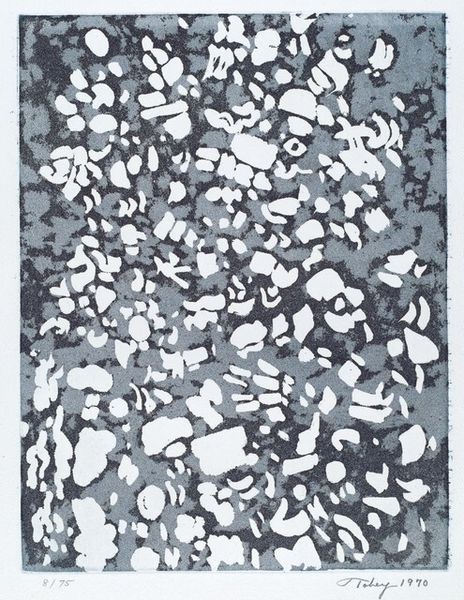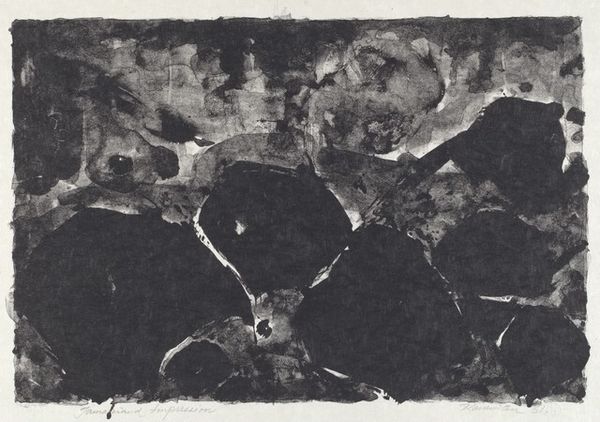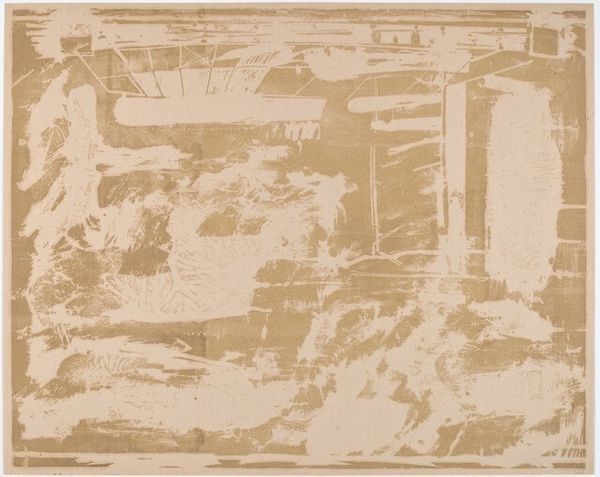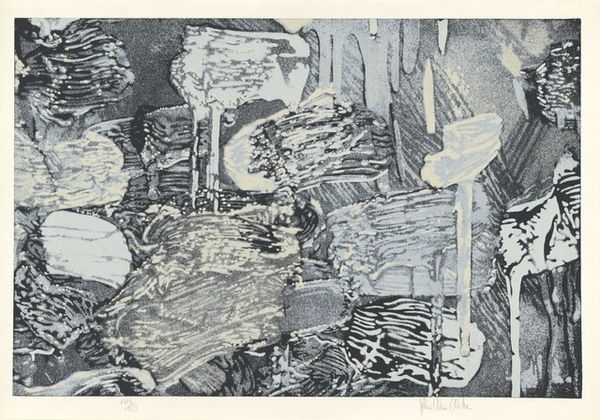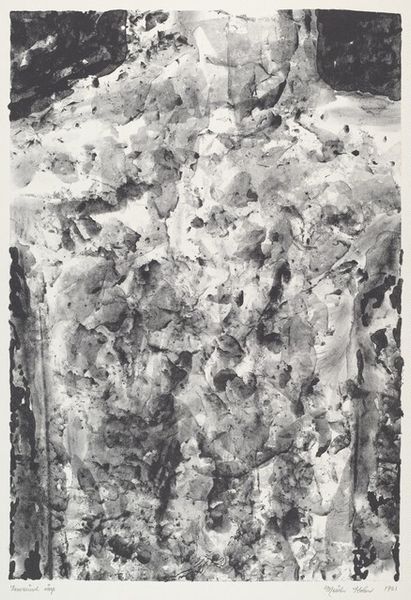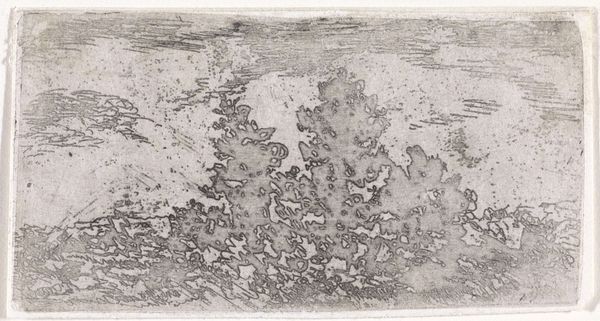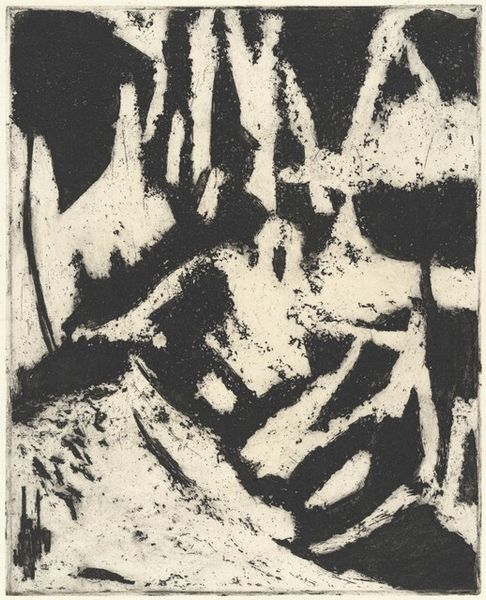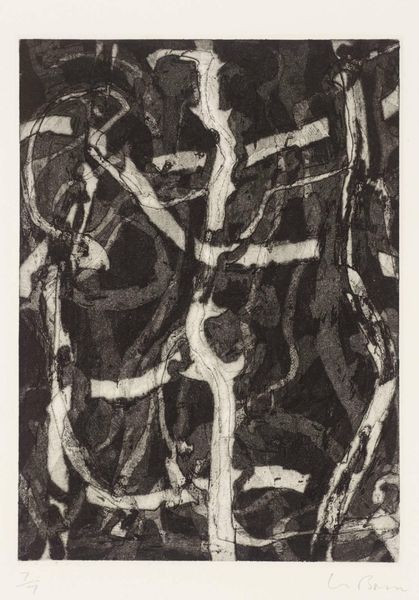![Untitled [monotype] by Jasper Johns](/_next/image?url=https%3A%2F%2Fd2w8kbdekdi1gv.cloudfront.net%2FeyJidWNrZXQiOiAiYXJ0ZXJhLWltYWdlcy1idWNrZXQiLCAia2V5IjogImFydHdvcmtzL2MzYzdjN2NjLWM3NjMtNGRlMC1iZjNjLTM1ZjMxMTY1YWQ1NS9jM2M3YzdjYy1jNzYzLTRkZTAtYmYzYy0zNWYzMTE2NWFkNTVfZnVsbC5qcGciLCAiZWRpdHMiOiB7InJlc2l6ZSI6IHsid2lkdGgiOiAxOTIwLCAiaGVpZ2h0IjogMTkyMCwgImZpdCI6ICJpbnNpZGUifX19&w=1920&q=75)
#
neo-dada
Dimensions: image: 31.43 x 46.67 cm (12 3/8 x 18 3/8 in.) sheet: 50.17 x 64.77 cm (19 3/4 x 25 1/2 in.)
Copyright: National Gallery of Art: CC0 1.0
Editor: So, here we have an Untitled monotype by Jasper Johns from 1997. It’s a mixed-media work using ink, graphite, and collage… The abstract composition, rendered in shades of grey, really gives me a sense of fragmentation and…almost a coded message. What stands out to you about this piece? Curator: Well, considering Johns' body of work, particularly his engagement with semiotics and the appropriation of everyday objects, this fragmented abstraction offers a compelling puzzle. I see a layering of personal and cultural signifiers obscured by process. Think about Johns' position within the neo-Dada movement; how does this print negotiate the space between representation and abstraction? Editor: It's definitely less recognizable than his flags and targets, right? So is he moving away from commenting on pop culture, and more towards something…internal? Curator: Perhaps not a movement "away," but a shift in the mode of commentary. While flags are explicitly public symbols, this work probes the limitations of language and visibility itself. Abstraction became a strategy. What power dynamics are at play when familiar visual language devolves into something less legible? Does that opacity invite or repel the viewer? Editor: That makes me think about how institutions decide what art is "worthy" and then how viewers decode the chosen artwork’s imagery, like… whose history are we really seeing here? Curator: Precisely. The museum space transforms private experience into public spectacle. The artist is mediating visual language with political undertones in a gallery setting for collective viewing. Where would this piece sit differently in, say, a government building or even someone’s home? How does the location dictate the interpretation of what’s visually being expressed? Editor: That's something to think about… I initially saw fragmentation, but now I also consider that the fragmentation and layers ask deeper questions about public perception. Curator: Indeed, and considering the date, 1997, this piece speaks to a time of social commentary, questioning the authority inherent in display.
Comments
No comments
Be the first to comment and join the conversation on the ultimate creative platform.
